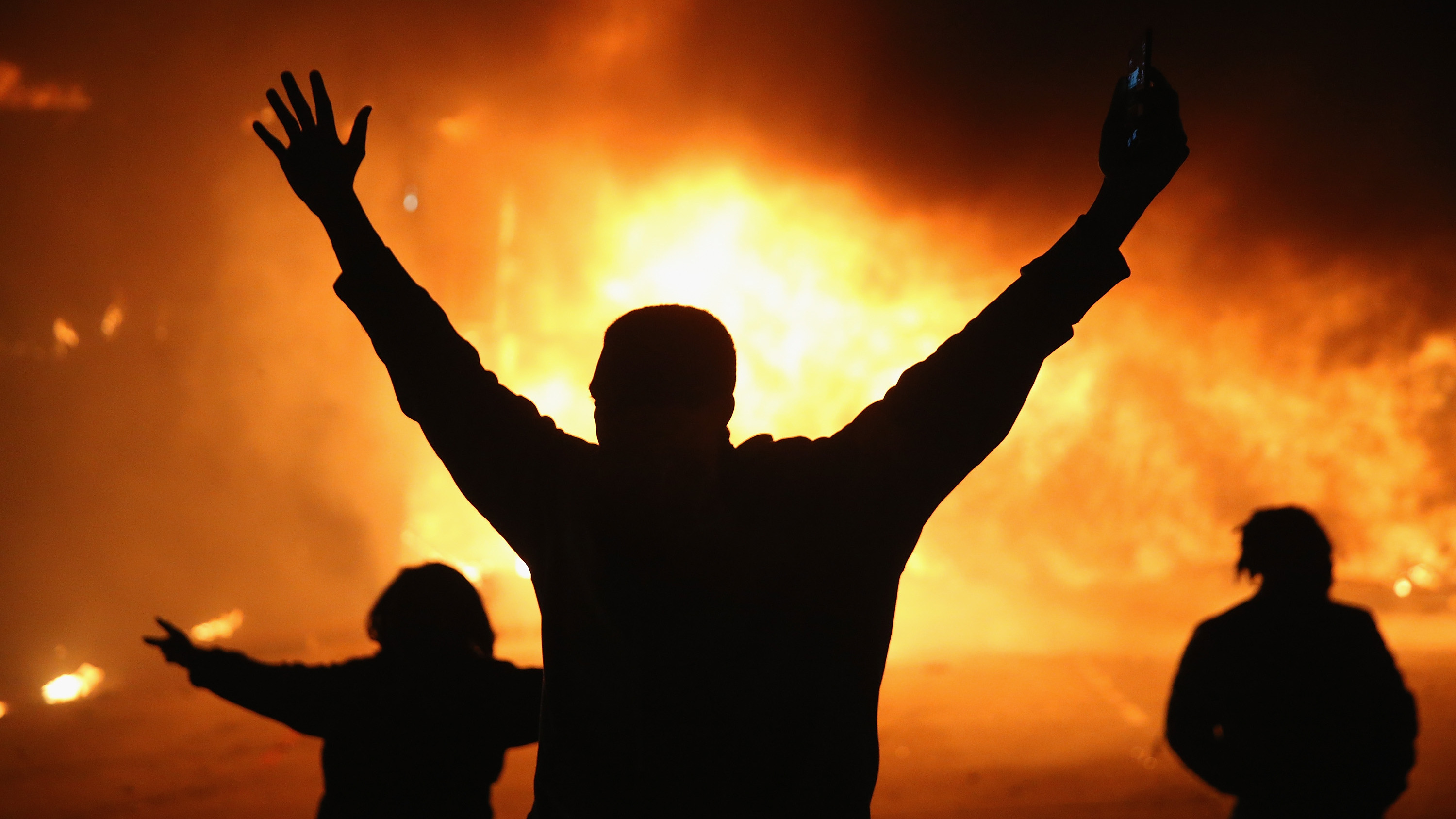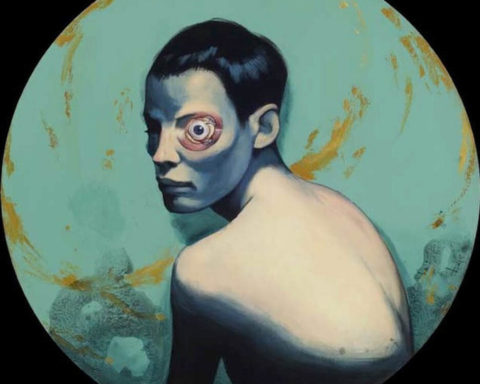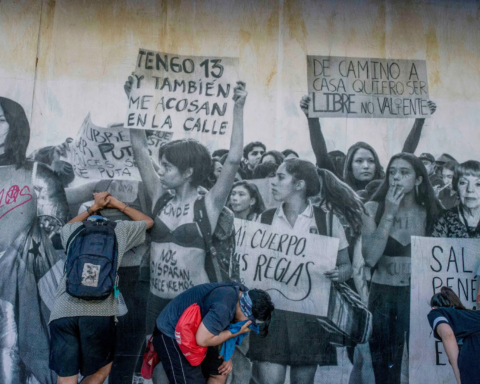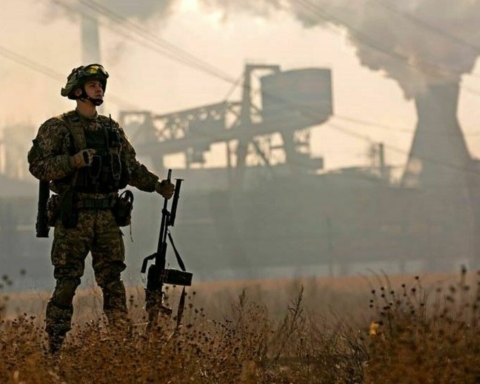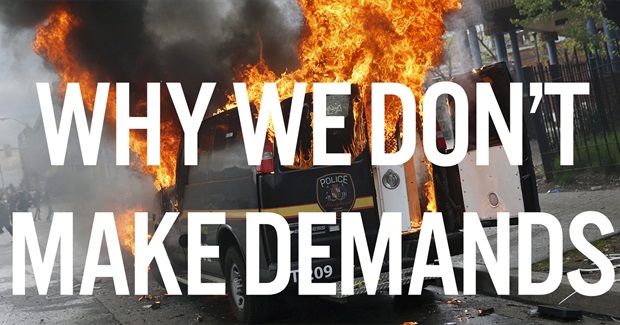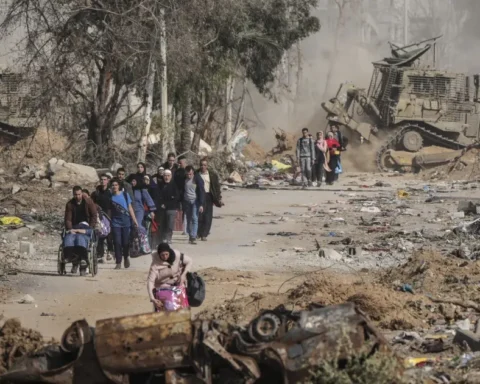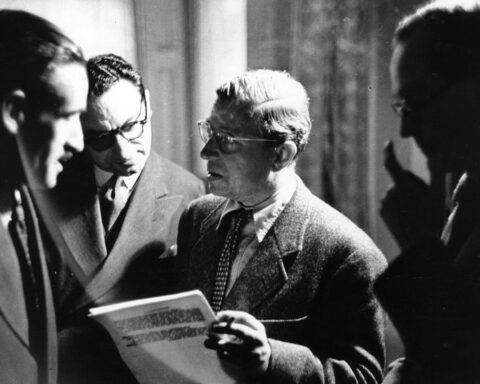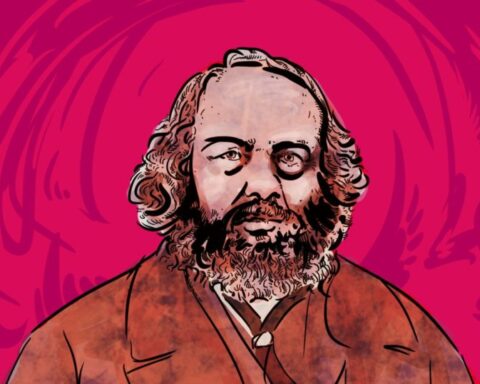This essay explores the prospect of attaining a non-coercive morality that could enable the simultaneous realisation of maximal individual freedom and stable community, through the exposition of an anarchist theory premised on a subjective ‘conscience-ethic’, an inherent tendency toward sociality and ‘mutual aid’, and normative ‘usufruct’ in property. Part of the project entails the development of a reflexive synthesis between the two seemingly contradictory ends of ‘individual’ and ‘community’, concluding that only an anarchist ‘social order’ integrating self, society, and nature can resolve this apparent tension. In this regard, an argument is advanced here for a commonly-held materiality (deriving from the ‘state of nature’) that sets the framework for a normative view of property and possession. The essay concludes with an assessment of the efficacy of an accord between anarchist moral theory and poststructuralism.
Introduction: The Persistence of Moral Inquiry
Human history and moral reasoning are inextricably linked to such an extent that it is nearly impossible to discuss the former — either in assessing the past or speculating about the future — without reference to the latter. Even prominent theories often characterized as a-moral, such as Nietzsche’s forecast of the “advent of nihilism,” his pronouncement that “God is dead,” and his claim that we have finally witnessed the “end of the moral interpretation of the world” (Kaufmann, ed., 1956), nonetheless require reference to a moral framework even if only as a means of adducing a critique of religion, authoritarianism, or formal ethics.[*fn1] Try as he might, Nietzsche cannot escape the primacy of morality since humans have been and always will be imbedded in a network of moral processes; indeed, as Peter Kropotkin, the gentle prince, has shown through his extensive biological and zoological research on Ethics (1992), the moral impulse in nature precedes the existence of human life. Early humans, according to Kropotkin, developed the moral urge by observing the processes of nature, “and as soon as they began to bring some order into their observations of nature, and to transmit them to posterity, the animals and their life supplied them with the chief materials for their unwritten encyclopedia of knowledge, as well as for their wisdom, which they expressed in proverbs and sayings” (1992:50). Human nature, then, as part of the great web of natural life and its complex processes, has been and will always be imbued with the moral impulse.
For Kropotkin, the moral lessons that humans have derived from nature include: sociality; a prohibition against killing one’s own kind; the clan, kinship, or tribal structure; the advantages of common endeavor; play; and a notion of reciprocity in retributing wrongful acts (1992:51-9). In this view, the overarching tendency in nature toward “mutual aid” — and not competition, as the social Darwinists have argued — has principally enabled the survival of species in the animal kingdom, including of course the species Homo. Thus, while the precise character of ethical queries changes over time, with each development in science, technology, and social control bringing with it new and more difficult moral challenges, the omnipresent nature of moral inquiry itself is constant. In our postmodern world, changing by the minute as nanotechnology and instantaneous global communications continually re-make the social and material landscapes, we face an unprecedented urgency in the sphere of moral reasoning, often manifested in a pervasive sense of individual dislocation and collective anxiety. Nietzsche’s exhortation to “Live Dangerously” captures some of the angst of our own era, and in this notion we begin to grasp the essence of praxis as both a means of coping with an ever-changing world and as the very essence of the belief that “philosophy has to be lived” (Kaufmann, ed., 1956:51). “Praxis,” then, is simply the conscious deployment of an inherent moral impulse in nature that predates even our own human existence.
It must be noted, however, that for all of his insight into natural morality and the processes of biological communities, Kropotkin never formulated an ethic that would include the earth itself in its calculus, but instead often expressed, as George Woodcock notes, “a kind of uncritical optimism that the earth’s resources are unlimited” (in Kropotkin 1993:125). Today we possess a deeper understanding of the interdependence of all life processes on the planet and the tenuous nature of our own survival as a function of flouting this natural interconnection, and accordingly our current moral inquiries must reflect this ecological knowledge (see Rogers 1994). Thus, amidst our moral speculations on the nature of government, law, society, and property, there exists a ubiquitous grounding that presupposes humankind’s imbeddedness in the processes of “nature,” manifested in the primacy of sociality and mutual aid among humans, as well as in the recognition that these same priorities apply equally to our relationships with non-human nature. And this, I think, is the chief value of anarchism to moral reasoning: In challenging established conceptions of authority and illuminating the persistence of inequality in civil society, anarchism simultaneously enables a deeper inquiry into how these same “human” hierarchical processes impact the balance of life on the planet. In this light, human morality and natural morality are taken to be coeval, deriving from the same beginning place — and with that understanding we can undertake a meaningful analysis of the contours of politics, praxis, and property in the postmodern era.
Means and Ends: Confidence, Violence, and the Minimal State
At the outset, I am often asked the “political” questions — ostensibly for definitional purposes — whether “anarchist” and “libertarian” are interchangeable terms, and whether anarchism is some form of communism. We can even find references to anarchists as “libertarian communists” in the literature (Guerin 1989:118), pointing out the difficulties inherent in all attempts to categorize. Nonetheless, for purposes of analysis, “libertarians” generally favor, in the words of Robert Nozick (1974), “the minimal state,” and place great emphasis on maximum liberty as the principal aim of civil society. The libertarian minimal state, however, is troubling at the outset if we take the anarchist critique of statism seriously. But the question persists: Why not a minimal (“night-watchman”) state, charged only with protection and enforcement? The answer is threefold. First, we need to inquire: protection from and enforcement of what? When we understand the libertarian to be conceiving of a state apparatus to protect private property interests and to enforce the same, we immediately notice a divergence from the anarchist tradition enunciated by many theorists, including Proudhon, Kropotkin, and Emma Goldman.
The second response to Nozick centers on our view of human agency. The presence of a minimal state that is to maintain a monopoly on force for protection (of person and property) and enforcement (of contracts and obligations) implies that its subjects are not equipped to so regulate themselves; that is, that the subjects of the minimal state are not taken to be morally self-directing. In a similar vein, the libertarian is primarily concerned with negative liberty — freedom from coercion, interference, and obstacles; whereas the anarchist is mainly interested in positive liberty — freedom to be self-determining in accordance with an individual “will.” The distinction is important, and again reflects a fundamental difference in how we view agency. The libertarian begins with the presumption of the need for a strong social state (hence a weak view of the subject), works downward from there, and is satisfied when reaching the minimal state; indeed, libertarians dare not go further, if they take their Lockean (proto-liberal) roots seriously. The anarchist, on the other hand, begins from a perspective of statelessness, the weakest possible state (hence a strong view of the subject), and inquires whether we need to build upward at all.
Is this a fair statement of the libertarian’s position? In Anarchy, State, and Utopia, Nozick purports to build “upward” from the (stateless) Lockean state of nature, through the ultraminimal state (protection only for those who pay for it), and finally settles when he reaches the minimal state (1974:3-25). Likewise, Hobbes, Locke himself, and even Rousseau, begin from a theoretical state of nature construct and seem to build upward to the social state. It will be asserted here, however, that the social contract theorists were not attempting to show how the state naturally would grow from a condition of primitive statelessness, but were instead attempting a revisionist justification of an already-existing social state. The state of nature metaphor, then, seen in this light, is at best a neat expository device and at worst a slick literary trick intended to divert attention away from the true aims of its protagonists. The libertarian then, and in particular Nozick, starts from a construct that appears at first blush to be from the ground up but in reality works from the top down.
The third objection to even the minimal state centers on what we might call “confidence.” The presence of the state apparatus in any form will inculcate a tendency toward abdication in its subjects, something akin to what Thoreau described as resigning one’s conscience to the legislature (1965:252). For instance, the minimal state as conceived by Nozick occupies the fields of protection and enforcement. The likely net effect over time is that the subjects of such a state will grow increasingly “confident” in the state’s provision of these basic services, and that the subjects’ own abilities to protect and enforce will either atrophy or never develop. As Michael Taylor (1987:168-69) notes, “the more the state intervenes . . . the more ‘necessary’ it becomes, because positive altruism and voluntary cooperative behavior atrophy in the presence of the state and grow in its absence. . . . Men who live for long under government and its bureaucracy, courts and police, come to rely upon them. They find it easier (and in some cases are legally bound) to use the state for the settlement of their disputes and for the provision of public goods, instead of arranging these things for themselves.” Likewise Zygmunt Bauman (1993:31): “The bid to make individuals universally moral through shifting their responsibilities to the legislators failed, as did the promise to make everyone free in the process.”
A chief aim of anarchist praxis, then, must be the abolition of codified, formal laws: “Anarchism . . . has from the time of Godwin rejected all written laws” (Kropotkin 1968:176). Instead, the community would be “regulated by customs, habits and usages” (1968:201), as well as the urges of conscience experienced by each of its members. The anarchist view, again, is that reference to external, written laws represents an abdication of the subject’s capacity for moral self-direction — an essential element of a social order without institutional coercion. As Kropotkin opines (1968:197): “We are so perverted by an education which from infancy seeks to kill in us the spirit of revolt, and to develop that of submission to authority; we are so perverted by this existence under the ferrule of a law, which regulates every event in life — our birth, our education, our development, our love, our friendship — that, if this state of things continues, we shall lose all initiative, all habit of thinking for ourselves.” Moreover, codified laws require some institutional body for administration and enforcement, whereas internalized social norms can serve to cultivate deeper instincts for determining “right” and “wrong” by promoting broader access to the community’s moral pulse.[*fn2]
In this light, it becomes apparent that even the “minimal state” — with its laws and property rights and enforecement mechanisms — will engender a momentum that must be regarded with deep suspicion by the anarchist. This point further provides a suitable transition for developing an important distinction between Marxism and anarchism. In the well-known view of the former, a series of historical “revolutions” will bring about an eventual dictatorship of the proletariat, and then this socialist state will “wither away,” leaving an apparently stateless communist utopia. There is much that the anarchist likes in the end as foretold by Marx; the problem, however, lies in the means. If the anarchist is merely suspicious of the libertarian minimal state, then the Marxian socialist state (which is an even stronger state than the one it supplants) should be profoundly disconcerting. By what magic will the state wither away? The specter of confidence leading to entrenchment and atrophy haunts this vision of the socialist state (cf. May 1989:170). Moreover, the Marxist is “fully prepared to allow for the necessity of harsh means to achieve noble ends” (Lukes 1985:105). Not so the anarchist, to take Emma Goldman’s purist view, who maintains that “no revolution can ever succeed as a factor of liberation unless the means used to further it be identical in spirit and tendency with the purposes to be achieved” (id., quoting Goldman 1925:261) (see also Tolstoy 1990:16). Thus, if coercion, domination, hierarchy, and violence are eschewed as ends, we must not abide them as means, no matter how noble the aim.[*fn3]
Conscience, Community, and Karma
Related to this question of means and ends, we next consider the uneasy tension in anarchist thought between the priority of the individual and the necessity of community (as for example in Robert Paul Wolff’s essay In Defense of Anarchism (1970), in which he grapples with the task of reconciling the conflict between authority and autonomy). Some writers have even constructed camps within anarchist theory, giving us categories like “individualist anarchist” or “anarchistic egoism” and “collective anarchism” or “communitarian anarchism.” This labeling conundrum points out a fundamental difficulty that anarchist thinkers have struggled with: How to reconcile maximally-free individualism with the practical necessity of social community. This is the “genuine dilemma of anarchism,” in which it often appears that “Community negates itself, or at least is either unstable or compelled to resort to unanarchist methods of social control” (Condit 1987:56).
Is community, then, the enemy of freedom? Ritter gives us a good account of the anarchist notion of “public censure,” intended as a non-authoritarian means of securing compliance with community norms and inculcating the same (1980:25-39). But even censure can be coercive, and can have a chilling effect on freedom that is perhaps more tyrannical than the state apparatus it replaces — decidedly unanarchistic qualities. It would seem that we are back to the dilemma. The problem, however, lies in the direction of the coercion: censure, like state-sanctioned coercion, operates from the community onto the individual. Were we able to conceive an outward-directed mechanism, something originating with the individual and only secondarily reflected in the community, perhaps the difficulty is resolved.
In this regard, among some contemporary anarchist writers we observe formulations resembling a Kantian moral framework. Stephen Condit, for example, avers that “Autonomy entails at a minimum a person’s intentional actions based on a rational deliberation of her principles and goals, her commitment to the means necessary to them and her moral justification of the means in themselves” (1987:55). Taylor tells us that autonomy comprises rationality and authenticity, with authentic actions defined as those that “cohere” with a person’s “core self;” that is, when such actions are expressive of a character that has been critically adopted or affirmed (1982:148-50). Crowder also suggests an “authentic” self as “that part of the personality that wills morally right action,” made up of (a) rationality and (b) virtue (1991:10-11). And Wolff bases his “philosophical anarchism” on an explicitly Kantian version of “moral autonomy” that includes the burdens of “gaining knowledge, reflecting on motives, predicting outcomes, [and] criticizing principles” (1970:12-18). Their liberal-sounding foundations aside,[*fn4] these theories offer a potential solution to the “genuine dilemma of anarchism” by conceiving morality as personal, subjective, and not primarily the product of external coercion or inducement. Of course, we need not limit ourselves solely to Kantian notions of “autonomy” that assimilate conventional (or societal) rules, but instead might also consider the efficacy of a Nietzschean “autonomous individual, the one who creates and imposes self-made canons” (Palmer 1993:579).
Applied to our individual-community dilemma, the value of such a “conscience-ethic” is apparent. We might now be able to apprehend the possibility of a community of autonomous individuals who are morally self-directing. Of course, public censure will still at times be employed in any sub-utopian community, but by constructing our “coercive” apparatus from the individual outward, however, and not brought to bear from the community onto the individual, we can ensure that means such as censure will be only secondarily employed, and even then as the exception and not the rule. Only in this way, from the bottom up, is it possible to envision a true community of free, morally self-guided individuals. As Bauman (1993:61) notes:
“If solitude marks the beginning of the moral act, togetherness and communion emerge at its end — as the togetherness of the ‘moral party’, the achievement of lonely moral persons reaching beyond their solitude in the act of self-sacrifice which is both the hub and the expression of ‘being for’. We are not moral thanks to society; we live in society, we are society, thanks to being moral. At the heart of sociality is the loneliness of the moral person. Before society, its law-makers and its philosophers come down to spelling out its ethical principles, there are beings who have been moral without the constraint of codified goodness.”
Thus, for example, consider how the concept of “authority” might be viewed in an anarchist community. In Social Anarchism, Giovanni Baldelli provides us with a ready guide: (1) “Coercive power must be reduced to a minimum and put in as many hands as possible”; (2) “Claims to authority must be rejected if they are established by force”; (3) “Each authority must be answerable to several others that are equally responsible to several more”; (4) “No person in his relationship with another should be exempt from judgment by a third”; (5) “Overwhelming power should always be with the third party”; and (6) “Access to a third party, available to everyone, should be to many third parties, not to one only” (1971: 86-8). In this formulation, the integrity and priority of the individual is retained by conceiving authority and power as diffuse and accessible to all members, while still enabling the community qua community to function as it must.[*fn5]
Moreover, absent central authority, cooperation in the community is likely to develop and sustain since the autonomous conscience, in being called upon to consider the impact of its actions, necessarily accounts for the interests of others (indeed, of “nature” itself) before guiding the actions of the moral self. In this sense, the conscience-ethic can be said to incorporate a spirit of mutuality, a concern for what Bauman calls “the Other”: “Being a moral person means that I am my brother’s keeper” (1993:51). Kropotkin, in his well-known Mutual Aid (1972), went to great lengths to show that mutuality is the overwhelming norm among creatures of the earth, arguing in response to Darwinian biology that mutual aid and not just competition has enabled most advanced species to survive, and has likewise noted in an earlier work on “Anarchist Morality” (1993:139) that “The feeling of solidarity is the leading characteristic of all animals living in society.” And Todd May sees the “a priori of traditional anarchism: trust in the individual” in the sentiment that “Left to their own devices, individuals have a natural ability — indeed a propensity — to devise social arrangements that aare both just and efficient” (1989:171).
I have attempted here to show that the human agent in anarchist theory is at once individualistic and community oriented, and that the society composed of such agents is likewise reflexively constructed. The image is one of layers, with “conscience” as the first wave of securing moral conduct, and community secondarily involved. What of subjects “uncoerced” by either the self or the collective? If freedom is to be taken seriously, does that mean that one is free to commit genocide or to become a dictator? The answer for the consistent anarchist is that the interplay of the first two layers will succeed in cultivating self-directing moral agents and community-minded subjects; those few who remain unpersuaded by internal conscience or public encouragement (whether in the form of “censure” or even just in the desire for sociality) and instead persist in predatory, unanarchistic behavior, are consigned to abide the karma that attaches to their conduct. Any other response does greater harm than it seeks to prevent.
Thus we have constructed a tripartite anarchist formulation — conscience, community, and karma — in making the case for moral self-direction. But have we gone too far in so doing? I can already hear grumblings about universalism, foundations, and representation mounting from the wings of postmodernism. The autonomous moral agent envisioned here, however, is foundational only in the sense of the mechanism employed: the conscience. What is most definitely not universal is how the individual conscience manifests itself. It is important that this point be clearly understood. The argument is that there is a common apparatus, something universally attendant to existence and consciousness (as a function of the moral impulse in nature) that is sufficient to hold together a community of individuals. But there is no rigid ethical code in place, no privileging of one set of principles over another. Indeed, from place to place and at different times community standards and expectations will change; likewise from person to person the urges of conscience will vary. In this sense, we are conceiving a personal, subjective imperative of morality.[*fn6] That most will reach the same or similar moral conclusions does not mean that we have taken to universalism; it only means that people are more alike than different, and that sociality and reciprocity are fundamental moral impulses manifested in “the consciousness of an overriding human solidarity” (Read 1954:155). As Kropotkin observes (1993:144-45):
“We are not afraid to forego judges and their sentences. We forego sanctions of all kinds, even obligations to morality. We are not afraid to say: ‘Do what you will; act as you will’; because we are persuaded that the great majority of mankind, in proportion to their degree of enlightenment and the completeness with which they free themselves from existing fetters will behave and act always in a direction useful to society . . . . All we can do is give advice. And again while giving it we add: ‘This advice will be valueless if your own experience and observation do not lead you to recognize that it is worth following’.”
Property and Materiality
A related question often raised in objection to anarchism is, How can a society achieve the production, distribution, and maintenance of public goods absent a central authority? In other words: How can free individuals be encouraged to work and provide for the “public utility” without coercion, either negative (punishment) or positive (personal gain)? The problem with such queries is that they are inverted; the real question is how a society premised on coercion and central authority can ever produce, distribute, and maintain free individuals. A similar query concerns the “free rider” problem: How can a stateless society prevent those who do not share in the work from sharing the public goods produced by such work? Again, the question is misplaced; instead, we might inquire how a state society can justify barring certain individuals from having access to the enjoyment of public goods. In the anarchist society, all goods — material and intangible alike — are in a sense public, as a consequence of abolishing the kind of private property that has come to typify liberal-capitalist societies. The question turns, then, on how we come to define property in anarchist theory, and on how we view the individual’s rights and responsibilities in the production and maintenance of public goods. This section endeavors to provide some preliminary answers.
A fitting place to begin an analysis of public goods and property is with the “state of nature,” a metaphorical construct employed most prominently in the “social contract” theories of Hobbes, Locke, and Rousseau, among others. As noted above, in Anarchy, State, and Utopia Nozick ostensibly builds “upward” from the (stateless) Lockean state of nature, through the “ultraminimal state” (protection only for those who pay for it), and finally settles when he reaches the “minimal state” (1974:3-25), paralleling the models of the early social contractarians who began from a state of nature construct and seemed to build “upward” in deriving the social state. It has often been argued, however, that the social contract theorists were not attempting to show how the state naturally would grow from a condition of primitive statelessness, but were instead attempting a revisionist justification of an already-existing social state. The starting points for the social contractarians in reality were (I) a preconception of the subject as atomistic and rationally self-interested, and (ii) the existence of a burgeoning strong social state whose aim was to galvanize these atomistic agents under the umbrella of a growing free market economy. Nozick, then, mirroring the revisionism of the social contractarians, professes to be working from the “bottom up” (i.e. primitive statelessness) in constructing his “minimal state,” when in fact just the opposite is true — with the net effect being that Nozick appears as a mere apologist for the neo-conservative laissez-faire state. As Stephen Condit (1987:159-63) asserts: “What he is specifically trying to do is to provide reasons for the existing distribution of property and economic capabilities. . . . In the end, Nozick is speaking only for those persons who already have effective domains of property, and dressing up their ideological interest as philosophical reasoning.”
In contrast with Nozick, who begins with Locke’s framework, many anarchist theorists take Rousseau’s formulation as their point of departure (e.g., Condit 1987), but even this turn is problematic since he too was ultimately guilty of such revisionist apologia. Thus, to the extent that we invoke the state of nature construction at all, it is not to justify preconceived notions of agency and society, but rather to illustrate concretely the naturalistic roots of our conception of materiality. The emphasis, then, is not on the “state” but on “nature,” and from this perhaps we can derive a comprehensive theory of normative property.
In A Discourse on the Origin of Inequality, Rousseau (1973) develops a whimsical picture of the state of nature, a time and place where life was simple, regular, and good. What was lacking, however, and what ultimately forced mankind out of this Eden and into the chains of the social state, was imagination, a searching mind, philosophy, and recognition; the simple physicality of life in the state of nature was not sufficient to sate the growing intellectual, emotional, and linguistic urges of even its “savage” inhabitants. We thus departed this state of nature, giving up our natural liberty and the right to anything that tempted us, in favor of a social state that granted us “civil liberty and the legal right of property” in what we possess. The picture Rousseau has drawn portrays early man as distinct from his environment, as atomistic and non-communal, and as intellectually deficient. Among many “indigenous” or “primitive” cultures, however, we observe just the opposite: Nature is sacred, community essential, and philosophy integral. Much as Locke before him, Rousseau sees nature and its early inhabitants through a colonialist’s eyes. The mistake lies in how he conceives humanity vis-a-vis nature: An atomistic agent will be at odds with his environment, since it threatens his singularity; a self-interested subject will necessarily adopt an anthropocentric world view.
The Lockean formulation adopted by Nozick is even more troubling since, for Locke, “nature” is seen as something to be appropriated, enclosed, and possessed (we might say that Locke transforms Hobbes’s “war of each against all” into a “war of all against nature”). Nozick’s entitlement theory rests on the supposition that if all possessions are justly held (meaning that they were acquired in accordance with a modified Lockean proviso, and transferred justly over the course of their history), then an existing distribution of holdings is just (1974:150-82). A substantial flaw in this argument, as Alasdair MacIntyre observes, is that this means that “there are in fact very few, and in some large areas of the world no legitimate entitlements. The property-owners of the modern world are not the legitimate heirs of Lockean individuals who performed quasi-Lockean . . . acts of original acquisition; they are the inheritors of those who, for example, stole, and used violence to steal the common lands of England from the common people, vast tracts of North America from the American Indian, much of Ireland from the Irish, and Prussia from the original non-German Prussians” (1981:234). In other words, we have realized the logical consequences — theft, war, even genocide — of viewing the earth as something to be acquired and possessed, rather than revered and celebrated.
And so we arrive at Proudhon’s famous axiom that “property is theft.” Proudhon apparently did not intend by this that all property is theft, but only that which derives from unearned ownership (e.g., interest on loans; income from rentals) (Crowder 1991:85). We can extend this argument to form our own maxim: “All non-normative property is theft.” One possible point of departure is the concept of “usufruct.” Originally conceived as an alternative to private ownership of land in countries like Switzerland and Germany, usufruct granted one in possession the “right to build;” when usufruct rights were “sold,” it was not the land itself but the structures erected and capital accumulated on the land that were subject to transfer (Ushakov 1994:11). Godwin extended the concept to all property, asserting that individuals are entitled only to stewardship over goods, and are under strict obligations to use such goods in furtherance of the general happiness (Crowder 1991:86). Similarly, Proudhon envisioned a “usufructuary” as opposed to an owner, who was to be “responsible for the thing entrusted to him; he must use it in conformity with general utility, with a view to its preservation and development” (in Crowder 1991:86-7).
We can see the seeds of normativity developing here, culminating in Baldelli’s contention that “The main difference between ownership and usufruct as rights, is that while the former is irresponsible and unconditioned, the latter is subject to social and economic conditions and carries moral obligations” (1971:110). The rights of ownership include the right to abuse or even destroy one’s possessions; usufruct prohibits such action unless it is somehow to the general benefit (e.g., removing a hazard). Usufruct casts one in possession as a steward, holding the item in trust for all concerned, but still able to use and enjoy it in any harmonious way; as Murray Bookchin (1991:50) notes, “Such resources belong to the user as long as they are being used.” Taken further, usufruct logically permuted means that nothing belongs to me except everything; that is, I have moral obligations in all material things. The things that I possess must be used so as to comport with the well-being of the community; the things which no one possesses are to be maintained for the use and enjoyment of all; the things possessed by others are of concern to me as well. Again, Bookchin (1991:50): “[T]he collective claim is implicit in the primacy of usufruct over proprietorship. Hence, even the work performed in one’s own dwelling has an underlying collective dimension in the potential availability of its products to the entire community.” What other reasoned view can we have of the good things of the earth? The earth doesn’t belong to us, but we to it (Rousseau 1973:84); to misuse or destroy any part of it is to injure ourselves; material existence is a gift of nature, and with that gift comes an obligation to preserve the integrity of the whole.
Usufruct, then, can be seen as a “norm of rules for the social utilisation of material reality transcending a narrow, unspecified right of power over things” (Condit 1987:103); and as Bookchin (1991:54) further opines, “Even ‘things’ as such . . . stand at odds with organic society’s practice of usufruct.” In this regard we come to understand “property” as the original source of inequality, promoting power in the form of dominion “over things” — namely the “things” of nature, with nature including even ourselves. As the early Rousseau (1973:84) asserts in the Discourse on Inequality:
“The first man who, having enclosed a piece of ground, bethought himself of saying ‘This is mine’, and found some people simple enough to believe him, was the real founder of civil society. From how many crimes, wars, and murders, from how many horrors and misfortunes might not any one have saved mankind, by pulling up the stakes, or filling up the ditch, and crying to his fellows: ‘Beware of listening to this impostor; you are undone if you once forget that the fruits of the earth belong to us all, and the earth itself to nobody.'”
In rejecting this original hierarchy, we open a space for a truly egalitarian conception of self, society, and nature. To sustain this vision requires no less than individual conscience, mutual aid, and a notion of property that contemplates possession of nothing except everything; only an anarchist social “order” enables this expansive usufruct while preserving the integrity of the individual.
A Postmodern Anarchism?
The recurrent emphasis here on concepts such as individual conscience, inclusive community, and normative property leads the argument back to the persistent ‘moral inquiry’ noted at the top of this essay. In a nod to the current edge of ethical thought, consider the ‘postmodern’ critique of the material realities and power relations that work to inhibit the realization of the autonomous self. What are these sources of constriction? David Harvey describes “the condition of postmodernity” as one of fragmentation and contingency, in which aesthetics triumph over ethics, and where neo-conservative laissez-faire capitalism flourishes (1990:340-41). In this condition, explosive technological growth leads to runaway time-space compression, causing profound feelings of alienation and dislocation; these feelings in turn help produce a frenzied populace that readily takes to mass-marketed quick-fixes, which only serves further to exacerbate the problem. As Baldelli (1971:28) notes: “As production becomes progressively dehumanized and standardized . . . the man in the street becomes insensitive to the spirituality of things around him as his sense of wonder is blunted by increasingly complex and artificial conditions.” One need not be a postmodern philosopher to appreciate that something is very wrong with the world as it is presently configured; the parade of crime, corruption, and destruction broadcast into our homes each night makes this point evident to even the most detached observer.
The problem is that “postmodernism” offers us no way out, no “secure moorings” on which to base a new moral vision. What we have attempted to construct in this work is a subjective morality that escapes the prejudices of universalism without degenerating into nihilism. Have we been successful? Following Zygmunt Bauman, we have argued that it is possible to reject totalizing ethical codes and still have morality, in the belief that the “conscience of the moral self is humanity’s only warrant and hope” (1993:249-50). It is important to believe that what we do and how we live matters; to fail to do so can only invite cataclysm and perhaps even extinction. This is where resistance has value, and represents a point of convergence between anarchist and postmodern thought. The anarchist is adverse to all forms of power wielded by one group at the expense of another, whether by the state or some other institution; as a corollary, the anarchist has great faith in the power of the autonomous individual (May 1989:169-71). Similarly, Foucault’s analysis of the linkages between knowledge and institutional power identifies certain “technologies of the self” in the form of “various objectification strategies that have been used to control bodies” (Koch 1993:347).
Of course, Foucault was notoriously circumspect about issuing specific calls to action; and yet when he delineates for us in stark detail concepts like discipline, documentation, surveillance, and panopticism (see Rabinow, ed., 1984), we can’t help but feel that he is asking us to conclude for ourselves that such practices are being explicated so that they may be resisted. What else can be the end of such a critique, except to foster a spirit of resistance with an eye toward freedom? “If it is not in the name of humanism or some other foundation that the critique occurs, in what or whose name is it a critique?” (May 1989:177). The poststructuralist owes us an answer to this question;[*fn7] the anarchist has already given us one: the actualization of the autonomous moral self, as reflective of the moral impulse in nature, and properly freed from its universalistic foundations.
If we are to locate a moral foundation in poststructuralist thought, it lies in Foucault’s assertion that “ethics is a practice; ethos is a manner of being” (Rabinow, ed., 1984:377). In this regard, Todd May has divined certain ethical principles to which poststructuralism is implicitly committed: (1) “practices in representing others to themselves — either in who they are or in what they want — ought, as much as possible, to be avoided;” and (2) “alternative practices, all things being equal, ought to be allowed to flourish and even to be promoted” (1994:130-33). (May also notes that “there is a generally anticapitalist sentiment among poststructuralists that is ethically based” (1994:136)). The implication of these ethical precepts is that we ought to undertake practices that avoid representation and instead allow individuals to define and express themselves in their own unique manner — which sounds a lot like the anarchist aim of liberating the authentic self, the one that acts in the spirit of self-affirmation and social solidarity.[*fn8] As a consequence of this aim, however, we must be prepared to live with the proposition that “moral conduct cannot be guaranteed” (Bauman 1993:10), while still maintaining the belief that “humankind-wide moral unity is thinkable, if at all, not as the end-product of globalizing the domain of political powers with ethical pretensions, but as the utopian horizon of . . . the emancipation of the autonomous moral self and vindication of its moral responsibility” (1993:14-5). In this way, we arrive at a convergence that enables morality without resorting to universalism, arguing instead for a universal of “difference,” and a natural morality that knows no duties or obligations but only the innate urges of sociality and mutual aid.
Endnotes
1.Nietzsche’s Human, All Too Human (1996) — in which he develops an a-moral historicism that anticipates his later genealogy of morals — testifies to the fundamental character of moral inquiry. Even if we ultimately conclude, as Nietzsche does, that “the history of moral feelings is the history of an error” as to the knowability of the essential nature of “things” (1996:43), we still must acknowledge the primacy of moral inquiry in the evolution of human societies, as well as the moral impulse — real or imagined, innate or constructed — that exists in varying degrees within each of us.
2. See also Pfohl (1994:446): “Under the domination of the state, humans are said to progressively lose the ability to act directly in mutual aid and support, resistance, and reconciliation. In a state society, direct action is replaced by the mediation of bureaucratic rules, personal responsibility by the actions of rulers.” Likewise Bauman (1993:29,61): “[I]t is precisely the fact of the saturation of common life with coercive institutions, endowed with the sole authority of setting the standards of good conduct, that renders the individual qua individual principally untrustworthy. . . . [W]hen concepts, standards and rules enter the stage, moral impulse makes an exit; ethical reasoning takes its place, but ethics is made in the likeness of Law, not the moral urge.”
3.This is not a point of uniformity among anarchist theorists. As Ritter observes, Godwin and Proudhon both believed that “government and inequality must first prepare the way for anarchy through their effects” (1980:97) — what we might call a “negative means” formulation. Bakunin is more problematic, as Ritter notes, and “in his strategy gave force and deception a substantial, permanent place” (1980:101). Kropotkin, just to complete the quartet of predominant anarchist thinkers, seems to place his faith mainly in the “capacity of most people for clear thinking,” but does not entirely rule out the use of physical coercion (1980:105). In my view, borrowing from Tolstoy (1990:19), if the force of “persuasion and example” is not sufficient to carry the day, then perhaps it is not yet the right day; any other view offends my utopian sensibilities.
4.Todd May (1990:533-37), however, notes that the “multiplicity and heterogeneity” implicit in Kantian theories of justice indicate that “Kant’s brethren are to be found more in the camp of anarchists than in that of the liberals.”
5. Compare Murray Bookchin’s discussion of authority in “organic societies,” which he defines as “primitive or preliterate communities” (1991:43,55): “What we flippantly call ‘leadership’ in organic societies often turns out to be guidance, lacking the usual accouterments of command. Its ‘power’ is functional rather than political. Chiefs, where they authentically exist and are not the mere creations of the colonizer’s mind, have no true authority in a coercive sense. They are advisors, teachers, and consultants, esteemed for their experience and wisdom. Whatever ‘power’ they do have is usually confined to highly delimited tasks such as the coordination of hunts and war expeditions. It ends with the tasks to be performed. Hence, it is episodic power, not institutional; periodic, not traditional.”
6.As Tifft and Sullivan (1980:146) note: “An anarchist social order . . . is a moral order in accordance with which people, from their inner convictions, act towards others as they desire that others should act toward them. It is a social order in which each is able to live and act according to his or her own judgment.”
7.One writer, in attempting to construct a non-foundational poststructuralist anarchism, asserts that “The problem of representation is avoided by the denial of any notion of essence in the discussion of the individual” (Koch 1993:346). The difficulty comes in the preceding passage, where Koch tells us that “Discourse requires a sender and a receiver,” which contemplates the existence of an essential or foundational communicative apparatus (Koch terms this a “common biological composition among each receiver-sender”) necessary if we are to realize the “conditions for discourse” implicit in a poststructuralist epistemology.
8.See May (1989:179): “What both traditional anarchism and contemporary post-structuralism seek is a society — or better, a set of intersecting societies — in which people are not told who they are, what they want, and how they shall live, but who will be able to determine these things for themselves.” See also Koch (1993:344): “Anarchism represents the condition in which the optimal state of external plurality can exist.”
References
Baldelli, Giovanni. 1971. Social Anarchism. Chicago: Aldine.
Bauman, Zygmunt. 1993. Postmodern Ethics. Cambridge, MA: Blackwell.
Bookchin, Murray. 1991. The Ecology of Freedom: The Emergence and Dissolution of Hierarchy. New York: Black Rose.
Condit, Stephen. 1987. Anarchist Studies:Two Inquiries into the Ideal and Material Purposes of Philosophical Anarchism. Finland: U.Joensuu.
Crowder, George. 1991. Classical Anarchism: The Political Thought of Godwin, Proudhon, Bakunin, and Kropotkin. Oxford: Clarendon.
Guerin, Daniel. 1989. “Marxism and Anarchism,” in Goodway, David (ed.), For Anarchism: History, Theory, and Practice (NY: Routledge).
Harvey, David. 1990. The Condition of Postmodernity: An Enquiry into the Origins of Cultural Change. Cambridge, MA: Blackwell.
Kaufmann, Walter (ed.). 1957. Existentialism from Dostoevsky to Sartre. New York: Meridian.
Koch, Andrew M. 1993. “Poststructuralism and the Epistemological Basis of Anarchism,” in Philosophy of the Social Sciences, 23:3, Sept.
Kropotkin, Peter. 1968 [1927]. Kropotkin’s Revolutionary Pamphlets. New York: Blom.
—————-. 1972 [1914]. Mutual Aid: A Factor of Evolution. New York: New York University Press.
—————-. 1992. Ethics: Origin and Development. New York: Black Rose.
—————-. 1993. Fugitive Writings. New York: Black Rose.
Lukes, Steven. 1985. Marxism and Morality. New York: Oxford.
MacIntyre, Alasdair. 1981. After Virtue: A Study in Moral Theory. Notre Dame: University of Notre Dame Press.
May, Todd. 1994. The Political Philosophy of Poststructuralist Anarchism. University Park, PA: Univ. Pennsylvania Press.
—————. 1990. “Kant the Liberal, Kant the Anarchist: Rawls and Lyotard on Kantian Justice,” in The Southern Journal of Philosophy, 28:4.
—————. 1989. “Is Post-structuralist Political Theory Anarchist?,” in Philosophy and Social Criticism, 15:2, 1989.
Nietzsche, Friedrich. 1996 [1886]. Human, All Too Human: A Book for Free Spirits (M. Faber, trans.). Lincoln, NB: Univ. Nebraska Press.
Nozick, Robert. 1974. Anarchy, State, and Utopia. New York: Basic.
Palmer, Lucia M. 1993. “Anarchy and the Condition of Contemporary Humanism,” in History of European Ideas, v16/n4-6/p577.
Pfohl, Stephen. 1994. Images of Deviance and Social Control: A Sociological History (2d ed.). New York: McGraw-Hill.
Rabinow, Paul (ed.). 1984. The Foucault Reader. New York: Pantheon.
Read, Herbert. 1971. Anarchy and Order: Essays in Politics. Boston: Beacon Press.
Ritter, Alan. 1980. Anarchism: A Theoretical Analysis. New York: Cambridge.
Rogers, Raymond A. 1994. Nature and the Crisis of Modernity: A Critique of Contemporary Discourse on Managing the Earth. NY:Black Rose.
Rousseau, Jean-Jacques. 1973 [1750-62]. The Social Contract and The Discourses. London: Everyman’s Library.
Taylor, Michael. 1987. The Possibility of Cooperation: Studies in Rationality and Social Change. New York: Cambridge.
————–. 1982. Community, Anarchy and Liberty. New York: Cambridge.
Thoreau, Henry David. 1965. Walden and Civil Disobedience. New York: Harper & Row.
Tifft, Larry L., and Dennis Sullivan. 1980. The Struggle to be Human: Crime, Criminology, and Anarchism. Orkney, UK: Cienfuegos Press.
Tolstoy, Leo. 1990. Government is Violence: Essays on Anarchism and Pacifism. London: Phoenix Press.
Ushakov, Yevgeny. 1994. “Usufruct Urged Over Private Land Ownership,” in The Current Digest of the Post-Soviet Press, 46:20, June 15th.
Wolff, Robert Paul. 1970. In Defense of Anarchism. New York: Harper & Row.
This essay by Randall Amster (Arizona State University) first appeared (1998) in ‘Anarchist Studies’.”
